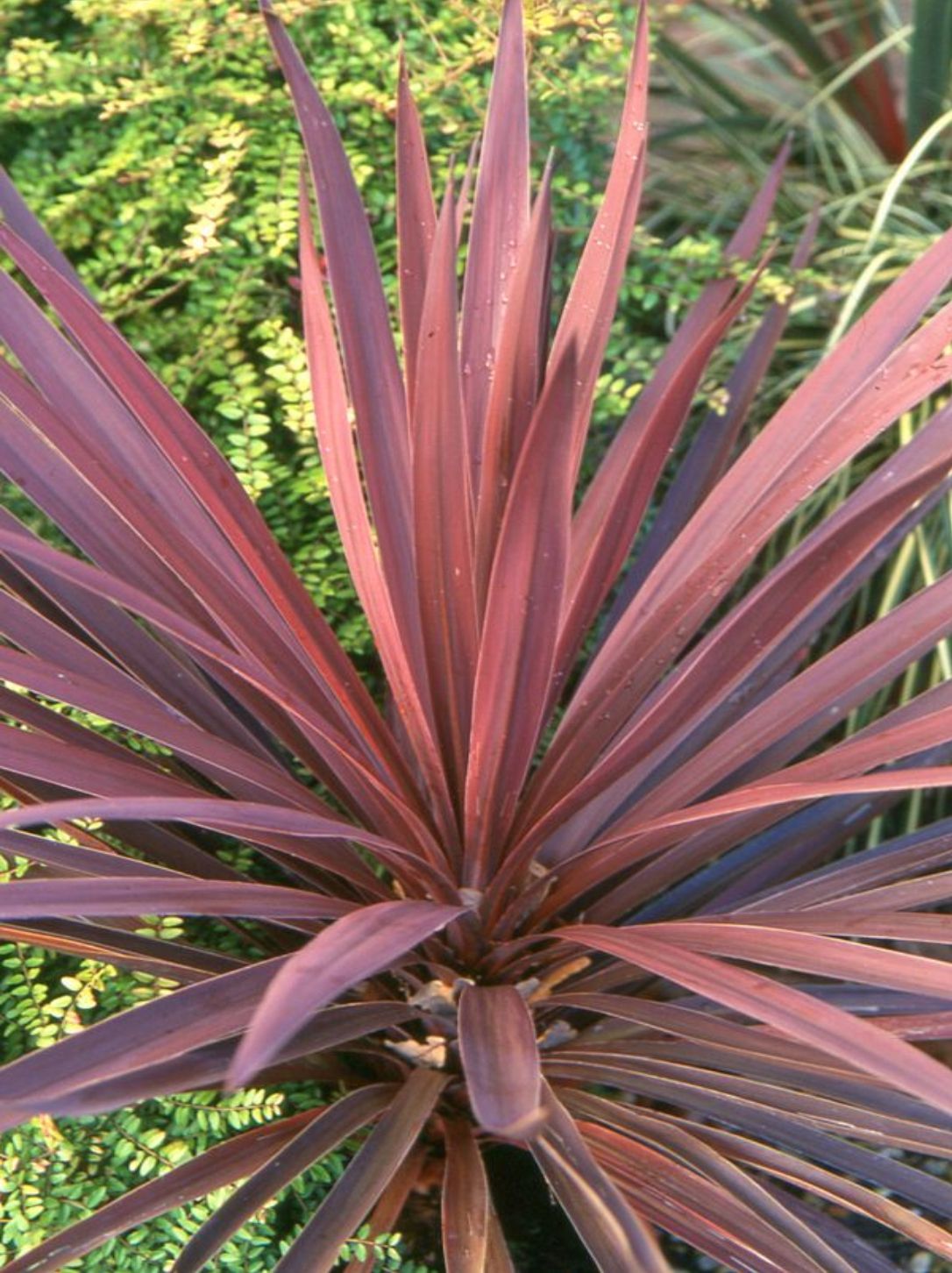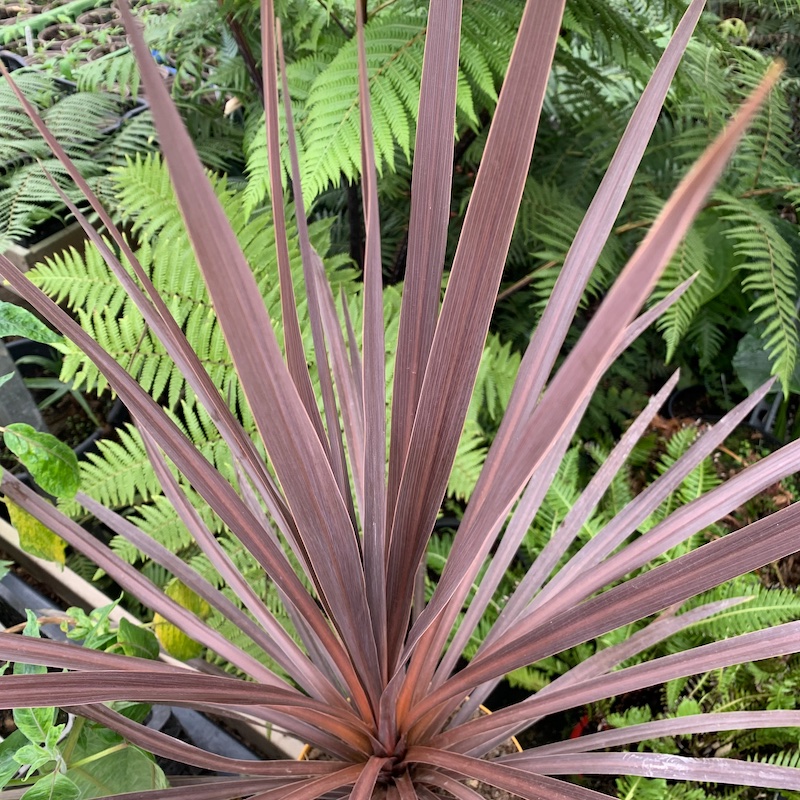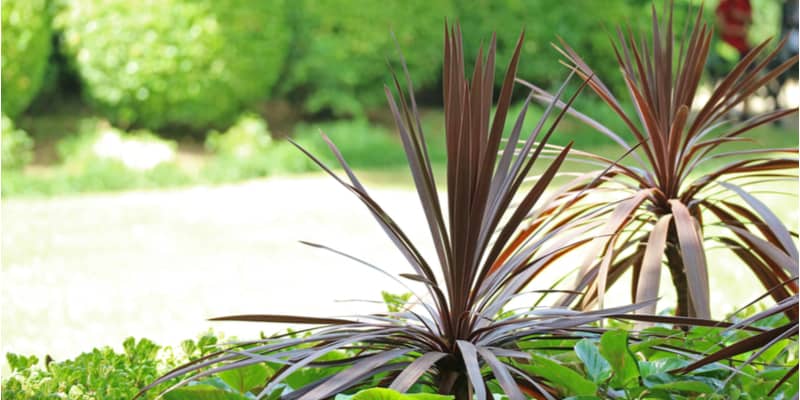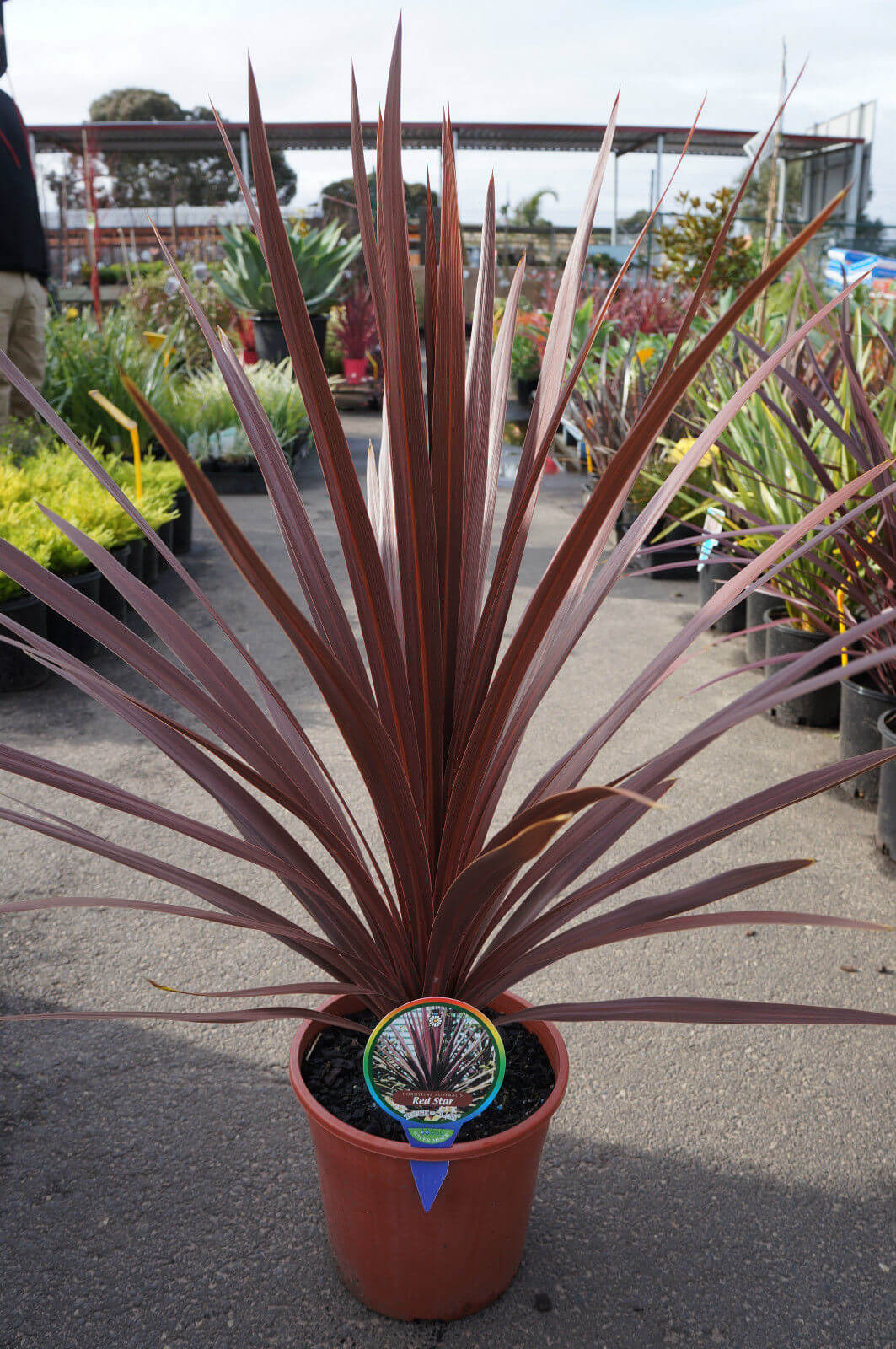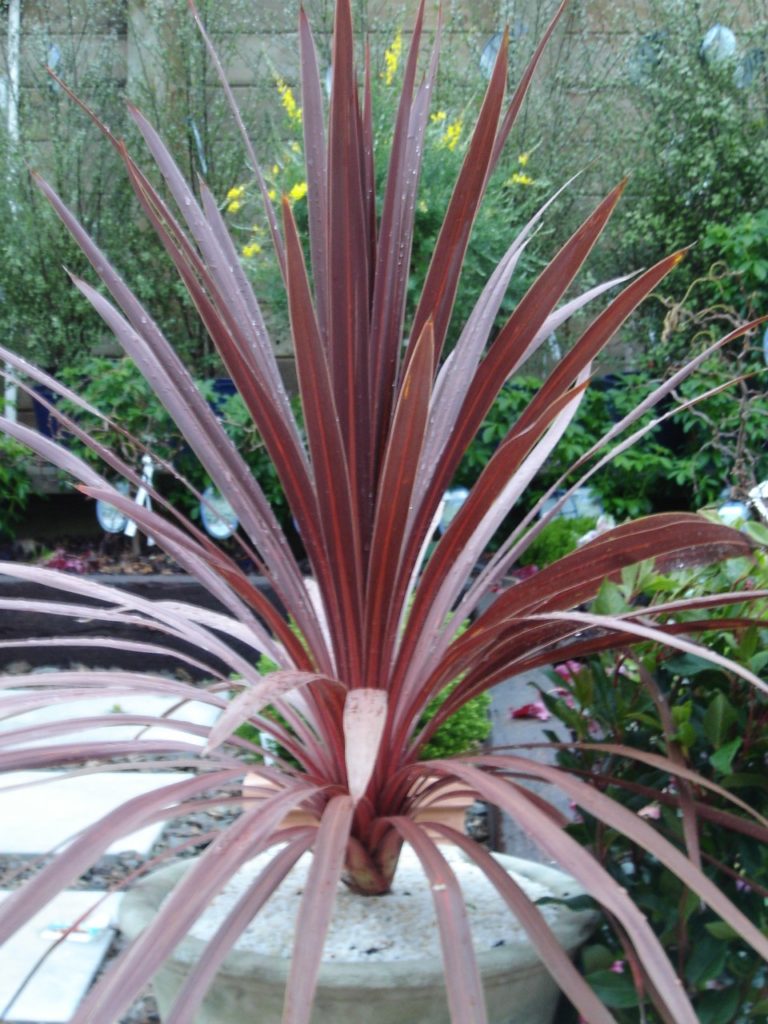Understanding the Needs of Your Cordyline Red Star
The Cordyline Red Star plant, also known as Cordyline australis ‘Red Star’, is a popular and striking ornamental plant native to New Zealand. Its vibrant red color and slender, upright growth habit make it a favorite among gardeners and indoor plant enthusiasts. To maintain the plant’s optimal health and color, it’s essential to provide the right care. Proper care of Cordyline Red Star involves understanding its specific needs, including lighting, watering, fertilization, pruning, and pest control. By meeting these needs, you can enjoy the plant’s beauty and benefits for years to come.
Cordyline Red Star plants are relatively low-maintenance, but they do require attention to their specific needs. One of the most critical aspects of care is providing the right amount of light. While the plant can tolerate some shade, it prefers bright, indirect light to maintain its vibrant color. In indoor settings, placing the plant near an east- or west-facing window is ideal. Outdoor plants should be placed in a location that receives partial shade to full sun, depending on the climate.
In addition to lighting, watering is another crucial aspect of Cordyline Red Star care. The plant prefers well-draining soil and should be watered thoroughly, allowing the soil to dry slightly between waterings. Overwatering can lead to root rot and other problems, so it’s essential to monitor the soil moisture and adjust watering accordingly. Fertilization is also necessary to promote healthy growth and color. A balanced, water-soluble fertilizer applied during the growing season (spring and summer) will provide the necessary nutrients.
Pruning and grooming are also essential for maintaining the plant’s shape and promoting healthy growth. Remove any dead or damaged leaves or stems, and cut back the plant to maintain its desired height. This will also encourage new growth and prevent the plant from becoming leggy. By following these care guidelines, you can enjoy the beauty and benefits of your Cordyline Red Star plant for years to come.
How to Provide Optimal Lighting for Your Cordyline Red Star
Lighting is a crucial aspect of the care of Cordyline Red Star plants. These plants prefer bright, indirect light to maintain their vibrant red color and overall health. When it comes to indoor lighting, placing your Cordyline Red Star near an east- or west-facing window is ideal. This will provide the plant with the right amount of indirect light, while avoiding direct sunlight that can cause scorching.
For outdoor plants, the lighting requirements are slightly different. Cordyline Red Star plants can tolerate full sun to partial shade, depending on the climate. In warmer climates, it’s best to provide some shade, especially during the hottest part of the day. In cooler climates, full sun can be beneficial. However, it’s essential to monitor the plant’s response to the lighting conditions and adjust accordingly.
It’s also important to note that Cordyline Red Star plants can adapt to low light conditions, but this may affect their color and growth. In low light conditions, the plant may not produce as much red color, and its growth may be slower. If you’re growing your Cordyline Red Star in a low light area, consider using grow lights to supplement the natural light.
In addition to the direction and intensity of light, the duration of light exposure is also important. Cordyline Red Star plants typically require 12-14 hours of light per day. This can be achieved by placing the plant in a bright, sunny location or by using grow lights to extend the day length.
By providing your Cordyline Red Star with the right amount of light, you can help maintain its vibrant red color and promote healthy growth. Remember to monitor the plant’s response to the lighting conditions and adjust accordingly to ensure optimal care of your Cordyline Red Star.
Watering Your Cordyline Red Star: Tips and Tricks
Watering is a critical aspect of the care of Cordyline Red Star plants. These plants prefer well-draining soil and should be watered thoroughly, allowing the soil to dry slightly between waterings. Overwatering can lead to root rot and other problems, so it’s essential to monitor the soil moisture and adjust watering accordingly.
The frequency of watering depends on the climate, soil type, and pot size. As a general rule, water your Cordyline Red Star plant when the top 1-2 inches of soil feel dry to the touch. In hot, dry climates, you may need to water more frequently, while in cooler, more humid climates, you may need to water less often.
It’s also important to consider the pot size when watering your Cordyline Red Star. Smaller pots dry out faster than larger pots, so you may need to water more frequently. On the other hand, larger pots may require less frequent watering.
When watering your Cordyline Red Star, make sure to water at the base of the plant, avoiding the leaves to prevent fungal diseases. You can also use a moisture meter to check the soil moisture levels and adjust your watering schedule accordingly.
Another important aspect of watering is the type of water used. Cordyline Red Star plants prefer water with a pH between 6.0 and 7.0. If your tap water is too alkaline or acidic, consider using rainwater or filtered water to avoid burning the roots.
By following these watering tips and tricks, you can ensure your Cordyline Red Star plant receives the right amount of moisture to thrive. Remember to monitor the plant’s response to watering and adjust your schedule accordingly to provide optimal care of your Cordyline Red Star.
Fertilizing Your Cordyline Red Star for Vibrant Color
Fertilization is an essential aspect of the care of Cordyline Red Star plants. These plants require a balanced fertilizer to promote healthy growth and maintain their vibrant red color. A balanced fertilizer with a ratio of 20-20-20 (nitrogen-phosphorus-potassium) is ideal for Cordyline Red Star plants.
When it comes to fertilizing your Cordyline Red Star, timing is everything. Fertilize your plant during the growing season (spring and summer) when it is actively producing new growth. Avoid fertilizing during the dormant season (fall and winter) when the plant is not actively growing.
The frequency of fertilization also depends on the type of fertilizer used. If you are using a water-soluble fertilizer, you can fertilize your Cordyline Red Star every 2-3 weeks. If you are using a slow-release fertilizer, you can fertilize your plant every 2-3 months.
In addition to the type and frequency of fertilizer, the method of application is also important. Always follow the instructions on the fertilizer package and avoid overfertilizing, which can damage the plant’s roots and cause other problems.
Some other tips to keep in mind when fertilizing your Cordyline Red Star include:
- Use a fertilizer that is specifically formulated for tropical plants like Cordyline Red Star.
- Avoid using too much fertilizer, as this can cause more harm than good.
- Consider using organic fertilizers, which are gentler on the plant and the environment.
By following these fertilization tips, you can provide your Cordyline Red Star with the nutrients it needs to thrive and maintain its vibrant red color. Remember to always follow the instructions on the fertilizer package and avoid overfertilizing to ensure optimal care of your Cordyline Red Star.
Pruning and Grooming Your Cordyline Red Star
Pruning and grooming are essential parts of the care of Cordyline Red Star plants. Regular pruning helps maintain the plant’s shape, promotes healthy growth, and encourages the production of new leaves and stems. In this section, we will discuss the importance of pruning and grooming for your Cordyline Red Star and provide tips on how to do it effectively.
Why Prune Your Cordyline Red Star?
Pruning your Cordyline Red Star is necessary for several reasons:
- Maintains shape: Pruning helps maintain the plant’s shape and prevents it from becoming leggy or uneven.
- Promotes healthy growth: Pruning encourages the production of new leaves and stems, which helps maintain the plant’s overall health.
- Encourages color production: Pruning can help encourage the production of new leaves and stems, which can lead to more vibrant color.
How to Prune Your Cordyline Red Star
Pruning your Cordyline Red Star is a relatively simple process. Here are some steps to follow:
- Remove dead or damaged leaves and stems: Use a pair of clean, sharp scissors or pruning shears to remove any dead or damaged leaves and stems.
- Cut back overgrown stems: Cut back any overgrown stems to maintain the plant’s shape and encourage new growth.
- Thin out the plant: Thin out the plant by removing any weak or spindly stems to allow for better air circulation and light penetration.
When to Prune Your Cordyline Red Star
The best time to prune your Cordyline Red Star depends on the plant’s growth cycle. Prune your plant during the spring and summer months when it is actively producing new growth. Avoid pruning during the fall and winter months when the plant is dormant.
Additional Tips
Here are some additional tips to keep in mind when pruning and grooming your Cordyline Red Star:
- Use clean and sharp tools: Use clean and sharp tools to prevent the spread of disease and to make clean cuts.
- Make clean cuts: Make clean cuts just above a node (where a leaf meets the stem) to encourage new growth.
- Prune regularly: Prune your Cordyline Red Star regularly to maintain its shape and promote healthy growth.
Pest and Disease Control for Your Cordyline Red Star
Like any other plant, Cordyline Red Star is susceptible to pests and diseases that can harm its health and appearance. In this section, we will discuss some common pests and diseases that can affect your Cordyline Red Star and provide tips on how to prevent and treat them.
Common Pests
Some common pests that can affect your Cordyline Red Star include:
- Spider mites: These tiny, spider-like insects can cause yellowing or bronzing of the leaves and fine webbing on the plant.
- Mealybugs: These small, white insects can cause a sticky substance to form on the leaves and stems of the plant.
- Scale: These small, armored insects can cause yellowing or stunted growth of the plant.
Common Diseases
Some common diseases that can affect your Cordyline Red Star include:
- Root rot: This fungal disease can cause the roots of the plant to rot, leading to yellowing or droopy leaves.
- Leaf spot: This fungal disease can cause small, circular spots to form on the leaves of the plant.
- Powdery mildew: This fungal disease can cause a white, powdery substance to form on the leaves of the plant.
Prevention is the Best Medicine
Preventing pests and diseases is always better than trying to treat them after they have occurred. Here are some tips to help prevent pests and diseases from affecting your Cordyline Red Star:
- Keep the plant clean: Regularly wipe down the leaves and stems of the plant with a damp cloth to remove any dust or debris.
- Provide good air circulation: Make sure the plant has enough space around it to allow for good air circulation, which can help prevent fungal diseases.
- Water carefully: Avoid getting water on the leaves or crown of the plant, as this can cause fungal diseases to develop.
Treatment Options
If your Cordyline Red Star does become infested with pests or diseases, there are several treatment options available. Here are a few:
- Insecticidal soap: This mild pesticide can be used to control spider mites, mealybugs, and other pests.
- Neem oil: This natural pesticide can be used to control a wide range of pests, including spider mites, mealybugs, and scale.
- Fungicides: These chemicals can be used to control fungal diseases such as root rot, leaf spot, and powdery mildew.
Propagation and Repotting Your Cordyline Red Star
Propagation and repotting are essential parts of the care of Cordyline Red Star plants. Propagation allows you to create new plants from your existing one, while repotting provides your plant with fresh soil and a larger pot to grow in. In this section, we will discuss how to propagate and repot your Cordyline Red Star.
Propagation Methods
There are several ways to propagate a Cordyline Red Star plant, including:
- Division: This involves dividing the roots of the plant to create new plants. This method is best done in the spring or summer when the plant is actively growing.
- Leaf cuttings: This involves taking cuttings from the leaves of the plant and rooting them in soil or water. This method is best done in the spring or summer when the plant is actively growing.
- Seed propagation: This involves planting seeds from the plant in soil and allowing them to germinate. This method is best done in the spring or summer when the plant is actively growing.
Repotting Your Cordyline Red Star
Repotting your Cordyline Red Star plant is necessary to provide it with fresh soil and a larger pot to grow in. Here are some tips to keep in mind when repotting your plant:
- Choose a pot that is only slightly larger than the previous one. This will help prevent the soil from becoming too wet and causing root rot.
- Use a well-draining potting mix to prevent waterlogged soil.
- Water your plant thoroughly after repotting to settle the soil.
When to Repot Your Cordyline Red Star
The best time to repot your Cordyline Red Star plant depends on the plant’s growth cycle. Repot your plant in the spring or summer when it is actively growing. Avoid repotting in the fall or winter when the plant is dormant.
Tips for Successful Propagation and Repotting
Here are some additional tips to keep in mind when propagating and repotting your Cordyline Red Star plant:
- Make clean cuts when taking leaf cuttings or dividing the roots of the plant.
- Use a rooting hormone to increase the chances of successful propagation.
- Keep the soil moist but not waterlogged during the propagation and repotting process.
Troubleshooting Common Issues with Your Cordyline Red Star
Despite proper care, your Cordyline Red Star plant may still encounter some common issues. In this section, we will discuss some of the most common problems that may arise when caring for your Cordyline Red Star plant, including yellowing leaves, droopy stems, and lack of color. We will also provide tips on how to troubleshoot and resolve these issues.
Yellowing Leaves
Yellowing leaves can be a sign of overwatering, underwatering, or nutrient deficiency. To troubleshoot yellowing leaves, check the soil moisture and adjust your watering schedule accordingly. Also, ensure that your plant is receiving enough nutrients by fertilizing it regularly.
Droopy Stems
Droopy stems can be a sign of underwatering or lack of support. To troubleshoot droopy stems, check the soil moisture and adjust your watering schedule accordingly. Also, provide support for the stems by staking them or using a trellis.
Lack of Color
Lack of color can be a sign of insufficient light or nutrient deficiency. To troubleshoot lack of color, ensure that your plant is receiving enough light by placing it in a brighter location or using grow lights. Also, ensure that your plant is receiving enough nutrients by fertilizing it regularly.
Other Common Issues
Other common issues that may arise when caring for your Cordyline Red Star plant include pests, diseases, and root bound. To troubleshoot these issues, inspect your plant regularly for signs of pests or diseases, and treat them promptly if necessary. Also, ensure that your plant is not root bound by repotting it in a larger pot with fresh soil.
Tips for Troubleshooting
Here are some additional tips for troubleshooting common issues with your Cordyline Red Star plant:
- Monitor your plant regularly for signs of pests, diseases, or nutrient deficiency.
- Adjust your watering schedule accordingly based on the soil moisture.
- Provide support for the stems by staking them or using a trellis.
- Ensure that your plant is receiving enough light by placing it in a brighter location or using grow lights.
- Fertilize your plant regularly to ensure that it is receiving enough nutrients.



